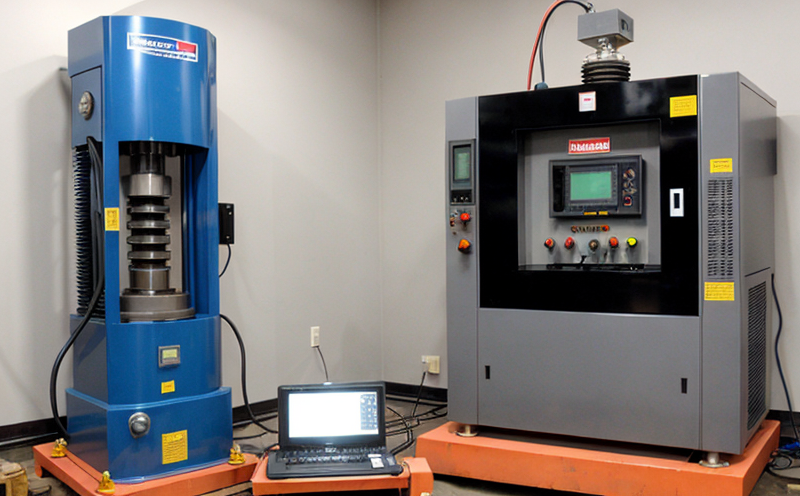JIS E 4031 Railway Vehicle Vibration and Shock Testing
The JIS E 4031 standard is a critical component of quality assurance in the railway vehicle industry. It specifies the procedures for simulating and assessing the effects of mechanical shock and vibration on railway vehicles during their design, development, and production stages. This testing ensures that all components are capable of withstanding harsh environmental conditions without compromising safety or operational integrity.
The primary purpose of JIS E 4031 is to evaluate how well railway vehicles can endure sudden accelerations and decelerations, as well as prolonged exposure to vibration. These tests mimic real-world scenarios such as train acceleration, braking, passing over rough terrain, and other dynamic conditions encountered during operation.
Understanding the requirements of JIS E 4031 is essential for quality managers, compliance officers, R&D engineers, and procurement teams involved in railway vehicle manufacturing and design. By adhering to this standard, manufacturers can ensure that their products meet stringent safety standards set by industry experts.
The testing process typically involves placing the specimen (the part or component being tested) on a vibration test machine designed specifically for railway applications. The machine generates controlled levels of mechanical shock and vibration based on predetermined parameters specified in JIS E 4031. Once the test is complete, engineers analyze the results to determine whether the specimen has passed or failed.
One key aspect of JIS E 4031 testing is its focus on durability and reliability over time. Unlike simpler impact tests that may only assess immediate resistance to shock, this standard emphasizes repeated exposure under varying conditions. This approach ensures that even minor defects become apparent before they lead to catastrophic failures in service.
Another important consideration when conducting JIS E 4031 tests is specimen preparation. Proper handling and conditioning of the part or assembly being tested is crucial for accurate results. Engineers must ensure that all fasteners are installed correctly, any lubricants are applied according to manufacturer specifications, and the overall structure remains intact throughout testing.
The equipment used in JIS E 4031 tests includes specialized vibration test machines capable of generating precise levels of mechanical shock and vibration. These machines often feature multiple axes for three-dimensional simulation of real-world conditions. Additionally, environmental chambers may be employed to control temperature, humidity, and other factors that could affect performance.
Once testing is complete, detailed reports are generated summarizing the results. These documents include information about test parameters, observed behavior during exposure, any damage or failures noted, and recommendations for improvement if necessary.
To comply fully with JIS E 4031 requires careful planning and execution from start to finish. From selecting appropriate specimens through final analysis of outcomes, every step must adhere strictly to the prescribed procedures outlined in this standard.
Applied Standards
| Standard Number | Title | Description |
|---|---|---|
| JIS E 4031 | Railway Vehicle Vibration and Shock Testing | This standard specifies the procedures for simulating and assessing the effects of mechanical shock and vibration on railway vehicles. |
Customer Impact and Satisfaction
- Ensures compliance with international safety standards.
- Improves product reliability by identifying potential issues early in development.
- Enhances reputation among clients who value quality and safety above all else.
- Promotes confidence within the industry through consistent performance across products.
International Acceptance and Recognition
The JIS E 4031 standard has gained widespread acceptance globally due to its rigorous approach to ensuring product safety. Many countries recognize this standard as equivalent or supplementary to their own national regulations, making it easier for manufacturers to export goods internationally.
By adhering to JIS E 4031, companies demonstrate commitment to high standards of quality and reliability, which can enhance market competitiveness and customer trust. This recognition also opens up opportunities for collaboration with other leading organizations operating within the railway vehicle sector worldwide.





